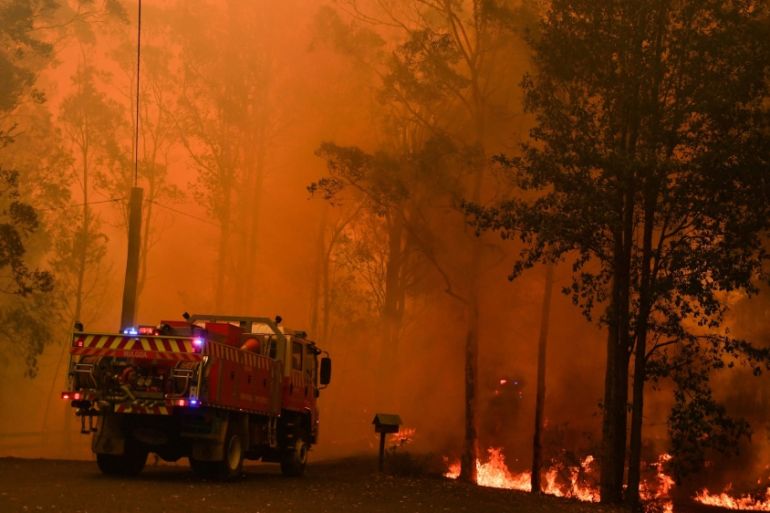BAL Report Principles: Essential Details for Homeowner
BAL Report Principles: Essential Details for Homeowner
Blog Article
Exactly How BAL Record Impacts Shrub Fire Security Actions
In the world of bush fire protection, the Building Strike Degree (BAL) report stands as an important tool that dramatically influences the safety and durability of buildings in fire-prone locations - BAL Report. The influence of a BAL evaluation expands far beyond mere documentation; it functions as the cornerstone for determining the ideal building requirements and fire defense steps required to mitigate the threats postured by bushfires. As areas grapple with progressively serious fire seasons, recognizing just how the BAL report shapes these protective steps becomes critical for policymakers, builders, and property owners alike
Comprehending the Bushfire Assault Level

Value of BAL Record Evaluation

Additionally, the BAL report analysis serves as a fundamental action in abiding with lawful responsibilities and requirements connected to bushfire security. Local councils and authorities usually mandate the entry of a BAL record as component of the planning and structure approval process to guarantee that homes are sufficiently safeguarded versus bushfire threats. Stopping working to perform an extensive BAL record evaluation can cause insufficient security procedures, leaving homes prone to ravaging bushfire events.
Building And Construction Specifications Based on BAL
A thorough understanding of the Bushfire Attack Degree (BAL) makes it possible for property proprietors to carry out building standards customized to their specific threat account. Construction standards based on BAL are vital in reducing the influence of bushfires on residential properties. The BAL rating categorizes the potential risk a residential property deals with during a bushfire on a scale from BAL-Low to BAL-FZ (Flame Area)
Carrying Out Fire Defense Procedures
With the foundation of building standards based on Bushfire Attack Level (BAL) in position, the focus now shifts towards the practical implementation of fire security actions to fortify residential or commercial properties against bushfire hazards. Implementing fire security steps includes a combination of passive and active techniques to improve the durability of buildings in bushfire-prone locations. Easy measures consist of utilizing fireproof structure products, installing ember guards on vents, securing voids in roofs and walls, and keeping a clear space around the building without combustible greenery. Active measures incorporate having firefighting devices easily offered, such as tubes and water pumps, along with creating a defendable room around the building by getting rid of plants and having a properly maintained yard. In addition, establishing a discharge strategy and making certain all residents recognize emergency procedures are crucial components of reliable fire protection actions. By integrating both passive and energetic methods, buildings can substantially decrease their susceptability to bushfire occurrences and raise the safety of occupants.
Safeguarding Residences Versus Bushfires
Efficiently safeguarding homes against the damaging effects of bushfires browse this site needs a positive and thorough method to fire defense actions. Home owners staying in bushfire-prone locations need to focus on the implementation of various techniques to improve their residential or commercial property's strength against wildfires. One fundamental aspect is producing a defensible area around the home by keeping a clear area devoid of flammable products. This consists of on a regular basis cutting plants, removing dead plants, and making sure a secure distance in between frameworks and trees. Mounting fire-resistant roof products can likewise dramatically decrease the danger of cinder strikes and straight fire call. Additionally, securing spaces and vents to avoid cinder intrusion, along with integrating fire-resistant doors and windows, can help fortify the home's defense versus view publisher site bushfires. Buying a trustworthy water source, such as a properly maintained sprinkler system or a committed water container, is important for supplying water throughout fire emergencies - BAL Report. By welcoming a proactive stance and integrating these safety steps, homeowners can significantly boost their chances of protecting their homes versus bushfires.
Verdict
In verdict, the Bushfire Assault Level (BAL) report plays an essential role in establishing the needed security actions versus bushfires. Implementing fire defense measures based on the BAL record is necessary in securing residential properties from potential bushfire risks.
In assessing bushfire risk to buildings, recognizing the Bushfire Attack Degree (BAL) is an important component for applying efficient defense procedures. On the whole, a clear understanding of the Bushfire Strike Level is essential for carrying out adequate defense steps and reducing the influence of bushfires on properties.

Report this page